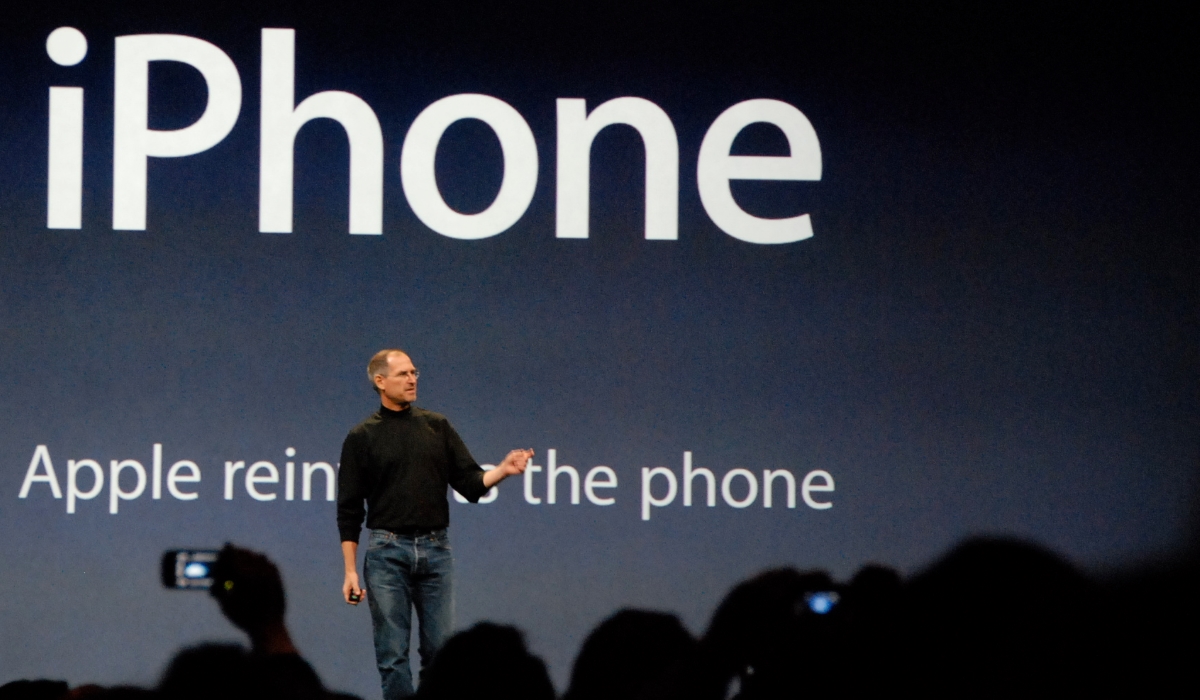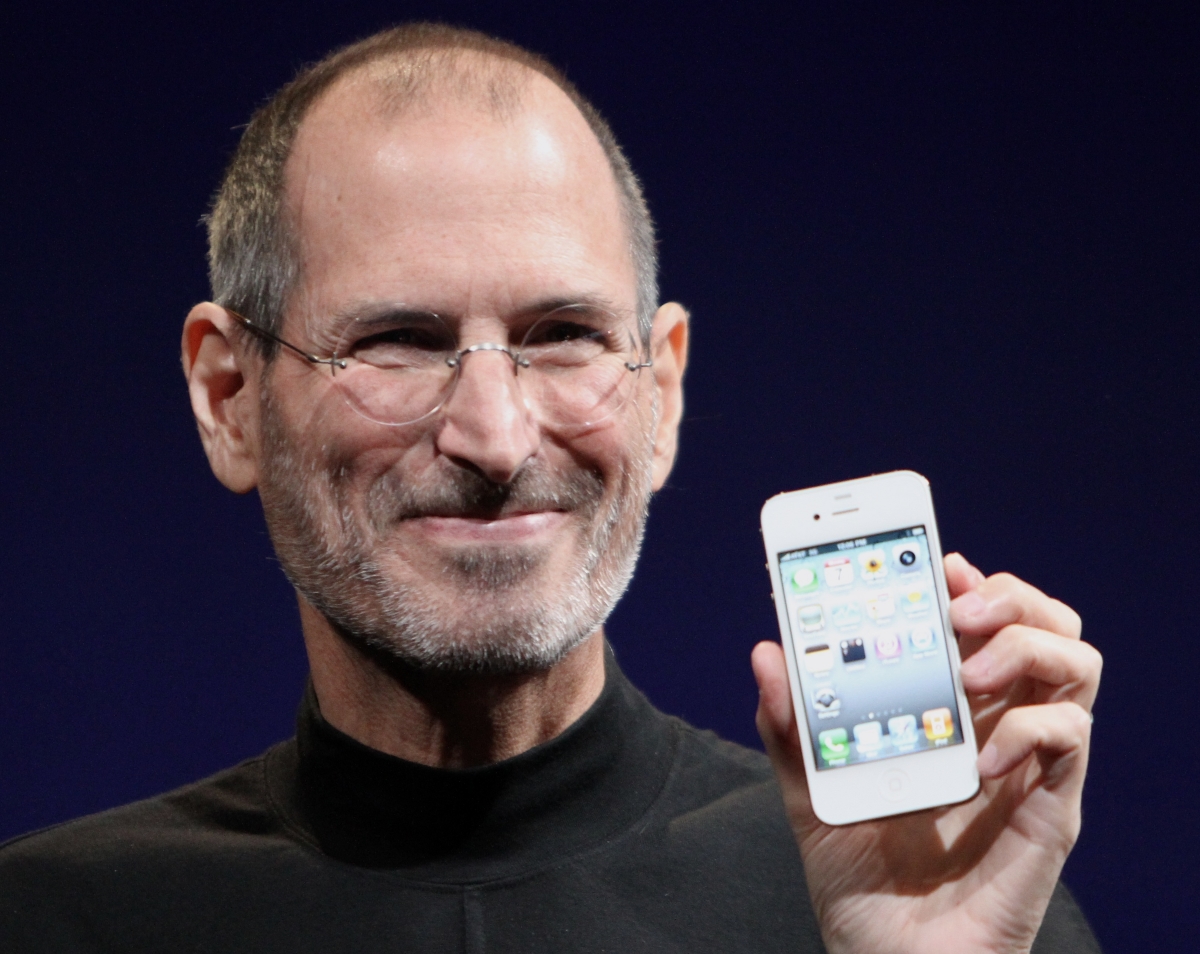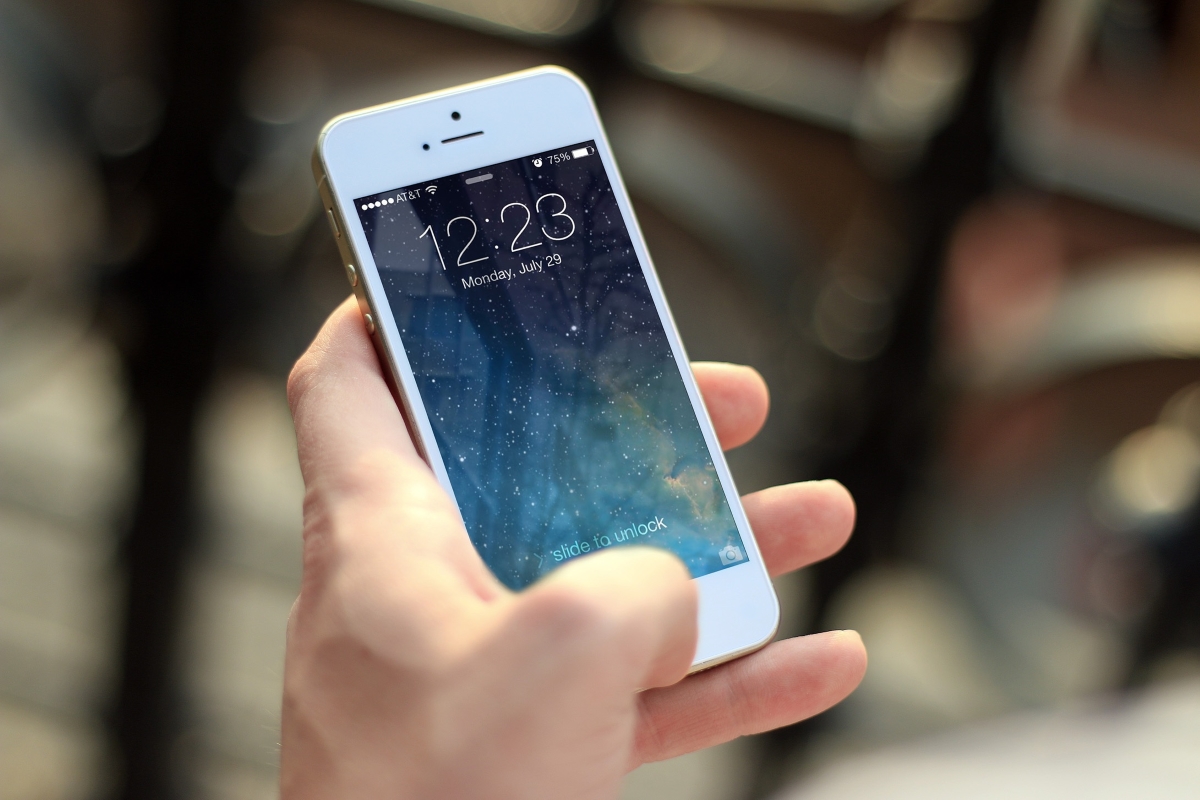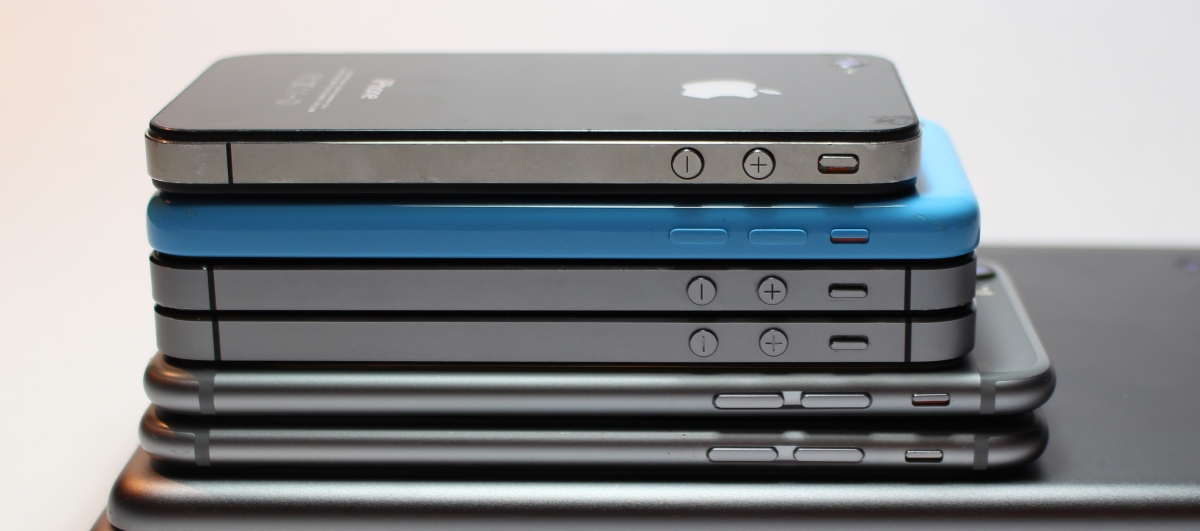iPhone: 10 Years, 10 Milestones
- Thursday, June 29th, 2017
- Share this article:
The first iPhone launched 10 years ago today, on 29 June 2007, changing the mobile landscape almost overnight. It’s been an eventful decade for Apple’s iconic device, so here are 10 of the biggest milestones from the history of the iPhone.

September 2007: iPhone sales break 1m
When Steve Jobs announced the iPhone at the Macworld event in January 2007 – billing it as “an iPod, a phone, and an internet communicator” all in one – he promised that the device would ‘make history’. Naturally, not everyone agreed.
The device was dismissed by the CEOs of RIM, maker of the BlackBerry phones, and Palm, maker of the Pilot PDA – both companies which, at the time, were better established in the space. Perhaps most memorable, though, were the comments of then Microsoft CEO Steve Ballmer, who concluded: “Theres no chance that the iPhone is going to get any significant market share. No chance.”
If the sceptics weren’t eating their words after the launch weekend, when Apple sold around 270,000 units, in a single market (the US) and with a single operator partner (AT&T), they surely were on 10 September that year, when Apple announced it has sold its millionth iPhone.
“1m iPhones in 74 days,” said Jobs at the time. “It took almost two years to achieve this milestone with iPod.”
By the time the original iPhone model was discontinued in June 2008, Apple had sold a total of more than 6m units.
July 2008: The App Store opens its doors
If the first iPhone introduced the world to the idea of the smartphone, it was its successor – the iPhone 3G – that perfected the formula.
On the hardware side, the second iteration of the iPhone added connectivity for GPS, tri-band HSDPA and of course 3G. The device launched in a much wider range of markets – 22 on its first day of release – and, thanks to new deals with the operators offering it on contract, at a much lower up-front price – $199, compared to the original’s $499. The biggest change, however, was simply the introduction of the App Store.
There’s a reason that Apple led with the slogan “There’s an app for that” in its marketing for the iPhone 3G. Introducing third-party apps opened up near-infinite possibilities on the device. It enabled the iPhone to become the worlds biggest games library, turned your smartphone into an essential travel tool, and jumpstarted the app economy we have today, giving a boost to up-and-coming services like Facebook, Twitter and Spotify along the way.
By 9 September 2008, the number of available apps had broken the 3,000 mark, with 100m downloads. By the end of 2016, there were 2.2m apps on the Store, with the annual number of downloads approaching 30bn.
 June 2010: Antennagate
June 2010: Antennagate
By the time of the iPhone 4’s release, Apple was the undisputed king of mobile. The night before, crowds gathered in their hundreds outside Apple stores – by this point, a fixture of any new iPhone launch – setting new records for first-weekend sales. It was a huge success, until users started to notice an unusual problem with the device.
Holding the phone in your left hand covered an antenna built into the its outer bezel, causing the signal to drop out.
It wasn’t disastrous, and the chances are most people wouldn’t have noticed – but what really compounded the issue was the response from Apple. When then-CEO Steve Jobs was asked about the issue, he replied: “Just avoid holding it in that way.”
Cue headlines about ‘antennagate’ in the mainstream media, endless jokes online, and various investigations into the issue. By the release of the iPhone 4S, it had all blown over, but it was a rare design flaw from a company that prided itself on the design of its hardware.
This wouldn’t be the final hardware issue that the iPhone faced, however. A succession of ‘-gate’ controversies followed in its wake, most notably ‘bendgate’, when it was discovered that the iPhone 6 and 6 Plus could easily become bent, whether sat in a pocket or with the owner’s bare hands.
October 2011: Say hello to Siri
With Steve Jobs having stepped down as CEO due to illness in August 2011, Apple’s big reveal of the iPhone 4S was further marred by news of his death the following day. With Jobs by now firmly established in the public eye as the visionary behind Apple’s success, his passing had a major impact on the company – to this day, whenever Apple is perceived as failing to innovate, you can be sure someone will wheel out the absence of Jobs as the root cause.
Nevertheless, the announcement of the 4S did have one undeniable bright spot: the introduction of Siri, a virtual assistant that used natural language processing to interpret the user’s spoken commands, from “remind me to call mom” to “will I need an umbrella this weekend?”.
This feature was so pivotal to the launch that the device was named after it – the ‘S’ in 4S stands for ‘Siri’. This naming convention proved successful, and became one that Apple returned to repeatedly with later devices, minus the original connotation of what it stood for.
The technology wasn’t perfect, especially when it came to voice recognition, but Siri captured the public imagination. That distinctive female voice cropped up on TV, forming the basis of an episode of popular sitcom The Big Bang Theory, and in cinema – whether appearing directly, as in Marvel blockbuster Ant-Man, or serving as inspiration for sci-fi films like Her and Ex Machina.
Siri has since been thoroughly bested, but the launch undeniably laid the groundwork for the likes of Amazon Alexa, and the age of AI assistants we currently seem to stood on the brink of.
 January 2012: Taking the biggest bite of the Apple
January 2012: Taking the biggest bite of the Apple
Apple had already undergone one major transformation in the previous decade, having begun the 2000s as a company best known for making desktop computers, before transitioning into music players with the iPod. But when the iPhone launched – having been pitched as, you’ll remember, a three-in-one computer, iPod and phone – it quickly became the company’s primary product.
When Apple reported its Q1 financials in January 2011, the iPod was still its biggest Christmas seller, with 19.4m units sold in comparison to 16.2m iPhones. By the next quarter, that had all changed. iPod sales had dropped by more than half, to 9m, while iPhone soared to 18.7m units.
This change made the iPhone’s biggest revenue sources, and close to making up the majority of Apple’s revenues. Incredibly close, in fact. The company made $12.3bn from ‘iPhone and related products and services’ – 49.9 per cent of its total revenues for the quarter.
It finally crossed the threshold in Q1 2012, with the success of the iPhone 4S, launched in time for Christmas, bringing in $24.4bn. Not only was that 52.7 per cent of the total, the iPhone segment nearly equalled the entirety of Apple’s revenues the previous Christmas single-handed.
September 2012: Apple Maps charts a course to disaster
After years of relying on maps provided by its main competitor, with iOS 6 Apple decided it was time to drop Google Maps in favour of its own offering. With Google reportedly refusing to implement turn-by-turn direction on iPhone, and the Android-iOS rivalry heating up, the decision seemed to make perfect sense.
That was, until the public actually got their hands on Apple Maps.
Missing towns; duplicated islands; satellite images that seemed to show bridges melting; random peaks and furrows on the 3D maps; directions that took a shortcut through the sea… These were just a few of the errors, as screenshots that started to make the rounds online. On top of that, the app was missing many of the features on offer in Google Maps, with the number of countries where street view, traffic and public transit data were available dropping dramatically.
The situation was so bad that TomTom, the struggling satnav maker that Apple had partnered with for the project, distanced itself from Apple Maps, emphasising that its involvement only extended to foundational data. Apple fired one of the managers who oversaw the Maps project, and CEO Tim Cook issued a public apology.
January 2014: The iPhone finally breaks China
After years of negotiation, Apple announced in December 2013 that it had finally signed an agreement with China Mobile.
The country’s other two major networks, China Telecom and China Unicom, had hammered out their own deals with Apple that September. The final sticking point in negotiations with China Mobile was its lack of 4G, not least because the network used a proprietary 3G standard developed by the Chinese government.
This was resolved when the country’s Ministry of Industry and Information Technology granted licenses to operate 4G networks, and on 17 January 2014, the iPhone 5S and 5C went on sale through China Mobile.
“China is an extremely important market for Apple”, said Tim Cook at the time. He was telling the truth – with 760m subscribers at the time, China Mobile was and remains the world’s largest mobile network. In Q2 2014, the first quarter after the launch, Greater China was Apple’s third biggest market, bringing revenues of $9.3bn.
September 2014: Going Plus-size
Looking back at an original iPhone now, the hardware has aged pretty well. The design has been streamlined over the past decade, but the aesthetic that Apple established with the first model has remained largely in place. The one thing that does stand out as unusual, though, is how small the screen looks.
The first four models retained the same 3.5” display size, but by the time the iPhone 6 was introduced, there had been a significant jump. Not only did it come alongside a ‘Plus’ model with a 5.5” screen – a move that was repeated with the 7 – but even the basic model was dramatically bigger than its predecessors, at 4.7”.
It’s indicative of a broader change in what we expect from smartphones. As the ways we use smartphones have expanded, so have their screens. What used to be considered a ‘phablet’ is now pretty much business as usual. Apple didn’t necessarily lead this move to bigger screens, but it did create the ecosystem that led to the shift in the first place.

October 2014: Apple Pay arrives
Mobile in-store payments weren’t a new thing in 2014. Google Wallet had launched on Android back in 2011, and groups of retailers and operators had set up their own joint ventures – CurrentC and Softcard respectively – to capitalise on this new opportunity.
However, no one had managed to crack the mainstream – thanks in no small part to the US’s reluctance to adopt PIN card payments, let alone contactless. When Apple Pay was announced as part of iOS 8 on September 2014, with the 6 and 6 Plus the first iPhone models to feature an NFC antenna, that looked set to change.
When Apple Pay went live in the US on 20 October 2014, it had the support of big-name US retailers like Bloomingdales, Staples, and McDonalds, plus the three major card networks and 500 banks, not to mention Apple itself.
By January the next year, Tim Cook announced that Apple Pay accounted for more than $2 out of every $3 spent through contactless on Visa, MasterCard and American Express. The number of locations accepting Apple Pay crossed the 1m mark after its first year, and by the end of 2016, it was supported by 35 per cent of all US merchants.
Perhaps the truest measure of Apple Pay’s success, though, is that it did normalise mobile payments in stores. The year after its launch, Samsung introduced its own version, Samsung Pay, while Google rebranded its offer to Android Pay. Today, while mobile payments still aren’t dominant, the sight of someone in a coffee shop, supermarket or even train station raising their phone to pay is no longer an outlier.
April 2016: iPhone sales drop for the first time
When Apple reported its Q2 2016 financials, something unprecedented happened. Not only did the company see a fall in revenues and profits, but sales of the iPhone dropped, by 16.3 per cent year-on-year.
This was the first time this had happened since the first iPhone’s launch all the way back in June 2007, but it wasn’t the last. Every quarter since, Apple has reported a drop in iPhone sales and revenues. In its most recent results, for Q2 2017, it sold 50.8m iPhones, compared to 51.2m a year earlier, and 61.2m in 2015.
However, it’s not all doom and gloom. The fall in sales is starting to decelerate, and in the past two quarters revenues from iPhone have actually increased year-on-year. It could just be a sign that the iPhone market has reached maturity – after all, in July 2016, just after the first drop was reported, Apple sold its billionth iPhone.
Meanwhile, these same reports have shown one part of Apple’s business consistently growing: Services, which covers the App Store, Apple Music and Apple Pay. It’s now the second largest part of Apple, bringing in $7bn in Q2 2017.
Maybe this growth points the way for the iPhone’s future. Not striving for innovation in its hardware, but building on the software offering Apple has built around the device. That approach is unlikely to make for exciting headlines – honestly, I struggled to find a memorable milestone from 2017 – and accusations that Apple has lost its way since the passing of Steve Jobs are sure to follow, but it could be the basis of a stable second decade for the iPhone.
















